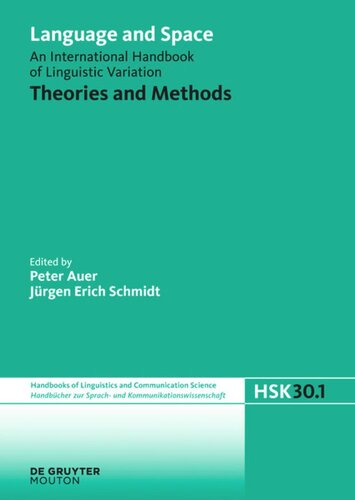

Most ebook files are in PDF format, so you can easily read them using various software such as Foxit Reader or directly on the Google Chrome browser.
Some ebook files are released by publishers in other formats such as .awz, .mobi, .epub, .fb2, etc. You may need to install specific software to read these formats on mobile/PC, such as Calibre.
Please read the tutorial at this link: https://ebookbell.com/faq
We offer FREE conversion to the popular formats you request; however, this may take some time. Therefore, right after payment, please email us, and we will try to provide the service as quickly as possible.
For some exceptional file formats or broken links (if any), please refrain from opening any disputes. Instead, email us first, and we will try to assist within a maximum of 6 hours.
EbookBell Team

0.0
0 reviewsThe dimensions of time and space fundamentally cause and shape the variability of all human language. To reduce investigation of this insight to manageable proportions, researchers have traditionally concentrated on the “deepest” dialects. But it is increasingly apparent that, although most people still speak with a distinct regional coloring, the new mobility of speakers in recently industrialized and postindustrial societies and the efflorescence of communication technologies cannot be ignored. This has given rise to a reconsideration of the relationship between geographical place and cultural space, and the fundamental link between language and a spatially bounded territory.
Language and Space: An International Handbook of Linguistic Variation seeks to take full account of these developments in a comprehensive, theoretically rich way. The introductory volume examines the concept of space and linguistic approaches to it, the structure and dynamics of language spaces, and relevant research methods. A second volume offers the first thorough exploration of the interplay between linguistic investigation and cartography, and subsequent volumes uniformly document the state of research into the spatial dimension of particular language groupings.
Key features: